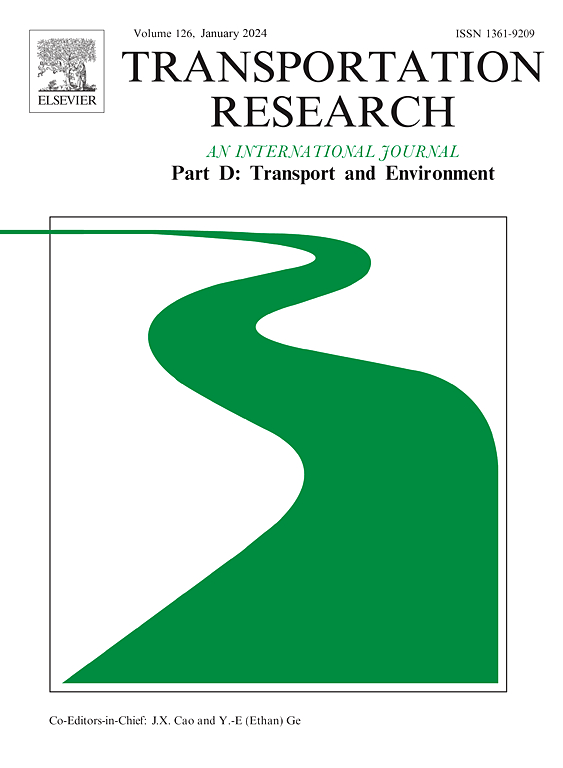Evaluating the productive frictions of Artist-in-Residence programs in departments of transportation
IF 7.3
1区 工程技术
Q1 ENVIRONMENTAL STUDIES
Transportation Research Part D-transport and Environment
Pub Date : 2025-02-01
DOI:10.1016/j.trd.2024.104582
引用次数: 0
Abstract
This paper considers the outcomes of four artist-in-residence (AiR) programs embedded in US Departments of Transportation (DOTs) in the early 2020s: two in state DOTs (Minnesota and Washington) and two in city DOTs (Los Angeles, CA, and Chattanooga, TN). The overarching goal of these programs was to encourage transportation practitioners to think more broadly about the relationship between transportation and equity through the introduction of creative practice. We evaluated these four programs as part of a larger study on arts and culture in transportation on behalf of the Minnesota DOT (TRB 2022). While formal evaluations might not have occurred for any of these residencies, it is nevertheless possible to consider them as more or less successful based on a) interviews with artists and agency representatives, and b) future actions the agencies are taking as an outcome of the residencies. We find the success of these programs correlates with the extent to which they incorporated epistemic justice in their steps towards transportation equity and mobility justice. In sum, the idea of epistemic justice, which has traditionally been applied in transportation studies to look at the state-community relationship, is also a useful tool when practiced in AiR programs when the aim is to change internal state practices.
求助全文
约1分钟内获得全文
求助全文
来源期刊
CiteScore
14.40
自引率
9.20%
发文量
314
审稿时长
39 days
期刊介绍:
Transportation Research Part D: Transport and Environment focuses on original research exploring the environmental impacts of transportation, policy responses to these impacts, and their implications for transportation system design, planning, and management. The journal comprehensively covers the interaction between transportation and the environment, ranging from local effects on specific geographical areas to global implications such as natural resource depletion and atmospheric pollution.
We welcome research papers across all transportation modes, including maritime, air, and land transportation, assessing their environmental impacts broadly. Papers addressing both mobile aspects and transportation infrastructure are considered. The journal prioritizes empirical findings and policy responses of regulatory, planning, technical, or fiscal nature. Articles are policy-driven, accessible, and applicable to readers from diverse disciplines, emphasizing relevance and practicality. We encourage interdisciplinary submissions and welcome contributions from economically developing and advanced countries alike, reflecting our international orientation.

 求助内容:
求助内容: 应助结果提醒方式:
应助结果提醒方式:


